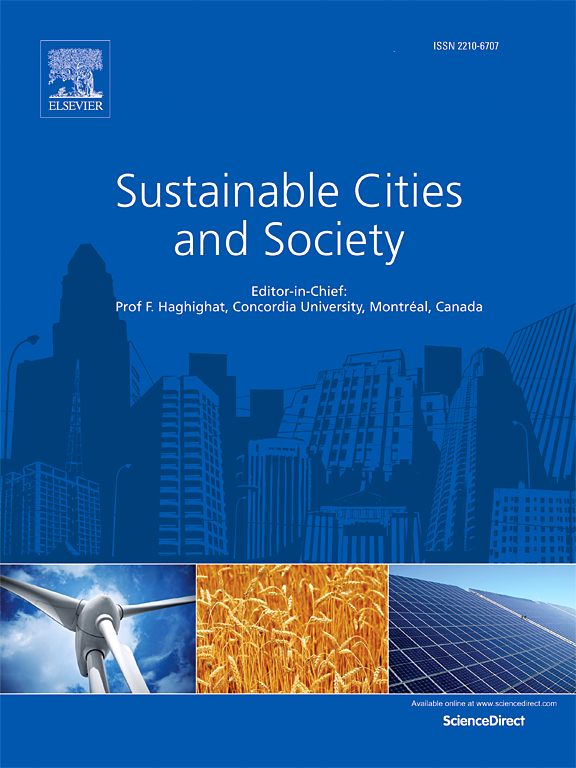Older adults’ preferences and behaviour during warm weather and heatwaves in the urban environment: A case study in southwestern Sweden
IF 10.5
1区 工程技术
Q1 CONSTRUCTION & BUILDING TECHNOLOGY
引用次数: 0
Abstract
In the face of a warming climate and an ageing population, developing age-friendly urban areas is increasingly important. This study investigates the impact of the urban environment and socio-demographic factors on older adults’ perceptions of indoor heat and outdoor activity during warm summers and heatwaves. The study takes a novel approach, incorporating survey data from older adults (age 64–92, n = 348) living in southwestern Sweden, with data on tree canopy coverage, building volume, and distance to water from geographical information systems (GIS). We further examine older adults’ preferences for different types of urban environments during heatwaves and desirable environmental features during warm days.
Results show that older adults living in areas with higher tree canopy coverage, close to parks, or with access to summer residences are less bothered by indoor heat during warm weather. Those living in urban areas with higher tree coverage and those having acess to a summer residences are less likely to avoid outdoor activity during heatwaves. Shade is the most desirable feature during warm days, with a majority seeking it in green areas. These findings highlight the importance of urban greenery and proximity to parks in ensuring outdoor activity, health, and well-being among older adults during warm summers and heatwaves.
求助全文
约1分钟内获得全文
求助全文
来源期刊

Sustainable Cities and Society
Social Sciences-Geography, Planning and Development
CiteScore
22.00
自引率
13.70%
发文量
810
审稿时长
27 days
期刊介绍:
Sustainable Cities and Society (SCS) is an international journal that focuses on fundamental and applied research to promote environmentally sustainable and socially resilient cities. The journal welcomes cross-cutting, multi-disciplinary research in various areas, including:
1. Smart cities and resilient environments;
2. Alternative/clean energy sources, energy distribution, distributed energy generation, and energy demand reduction/management;
3. Monitoring and improving air quality in built environment and cities (e.g., healthy built environment and air quality management);
4. Energy efficient, low/zero carbon, and green buildings/communities;
5. Climate change mitigation and adaptation in urban environments;
6. Green infrastructure and BMPs;
7. Environmental Footprint accounting and management;
8. Urban agriculture and forestry;
9. ICT, smart grid and intelligent infrastructure;
10. Urban design/planning, regulations, legislation, certification, economics, and policy;
11. Social aspects, impacts and resiliency of cities;
12. Behavior monitoring, analysis and change within urban communities;
13. Health monitoring and improvement;
14. Nexus issues related to sustainable cities and societies;
15. Smart city governance;
16. Decision Support Systems for trade-off and uncertainty analysis for improved management of cities and society;
17. Big data, machine learning, and artificial intelligence applications and case studies;
18. Critical infrastructure protection, including security, privacy, forensics, and reliability issues of cyber-physical systems.
19. Water footprint reduction and urban water distribution, harvesting, treatment, reuse and management;
20. Waste reduction and recycling;
21. Wastewater collection, treatment and recycling;
22. Smart, clean and healthy transportation systems and infrastructure;
 求助内容:
求助内容: 应助结果提醒方式:
应助结果提醒方式:


